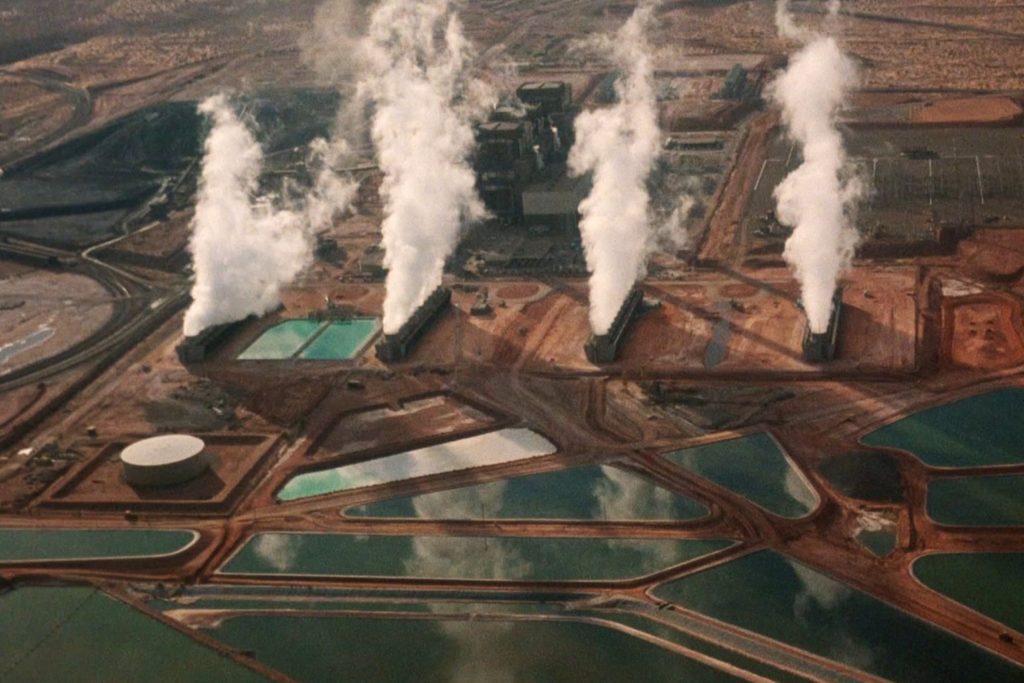Koyaanisqatsi (1982)

Koyaanisqatsi is a movie without words, without characters, and without plot — but it does tell a story. Essentially, it tells the story of us. By “us,” I mean of human beings as we exist today, with our high-rise buildings, gas-guzzling automobiles, and technology that surrounds us at every turn. Juxtaposing scenes of exotic and dynamic natural beauty with human-made structures, director Godfrey Reggio shows us the difference between the richness of life where there are no human-made structures within sight and the ugliness of the conditions in which we take for granted. Reggio never preaches, at least not overtly. Instead, he shows us through example, infusing images and music of actual locations and events, causing us to feel the serenity of being among the mountains and the hectic nature of the hustle and bustle of New York City’s rush hour.
It’s hard to judge a film like Koyaanisqatsi, as it isn’t a movie in the conventional sense. It is an experience of sight and sound, harmonized to evoke feelings. Like all pieces of art, what you feel, if you feel anything at all, will vary significantly with what is perceived by others that share the same experience. Some may fall asleep, while others may have an epiphany. However, it’s hard to imagine that anyone could stay awake through the entirety of the movie and not come away just a little different than they were before the film began. It is profoundly moving in a way that almost defies description. You have to see it for yourself.
Ironic that such complex emotions could be evoked by a film so simple in structure. All the movie consists of are images of nature and images of man and man’s creations, all set to Philip Glass’s rousing score. The images are never tainted, although most are sped up or slowed down, depending on the piece of music and the emotional effect which Reggio seeks.
What you feel the film is all about will greatly depend on you. Some will see it as a heavily pro-environmental film, while others will say it is more spiritual. Others may even think that it extols the beauty and power of things man has made with nature, although the final words at the end of the film would indicate that was definitely not the intent of the creators of this film, which is that we have taken something beautiful as the world around us and made it into madness. When you look outside, and almost everything you see is manufactured or artificial, how can you say you are living on Earth? In a way, it’s a call to get away from the madness, and a sorrowful testament how humanity’s greatest successes have led to our greatest failure as well, and perhaps, in the end, we will have created something wholly contrary to the life which the Earth initially gave us — our demise.
Qwipster’s rating: A+
MPAA Rated: Unrated, but probably G, suitable for all audiences
Running Time: 87 min.
Director: Godfrey Reggio
Screenplay: Ron Fricke, Michael Hoenig, Godfrey Reggio, Alton Walpole
